Snorkelling with bioluminescent plankton is one of the most ethereal natural experiences that you can have, so I’ve put together this guide for you to cover these areas:
- How to snorkel safely in the sea at night
- What is bioluminescence anyway?
- My experience of snorkelling with plankton
- How do you find it?
- How do you photograph it?
- Places in the world where you can see it
Without further ado, this is my complete guide to plankton snorkelling in the ocean:
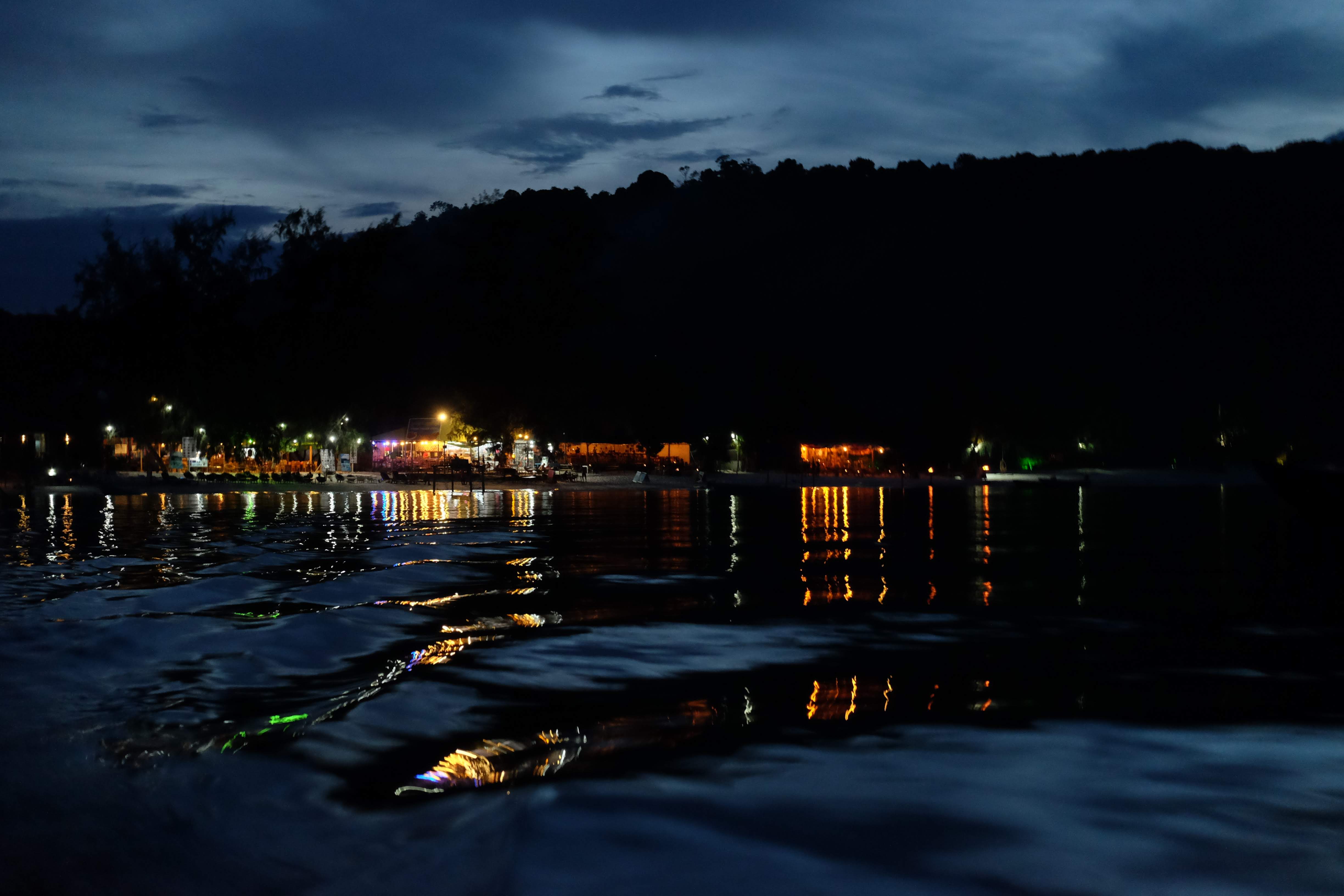
This post may contain affiliate links
How to snorkel safely in the sea at night
When looking for bioluminescent plankton, it’s important to remember a few things. The first is that it needs to be pitch black to see the plankton glow and only an idiot would so into the dark sea alone.
The ocean can be dangerous at night, there could be currents, predators like jellyfish or even sharks around as well as the chance of bumping into sharp rocks or marine litter like fish hooks.
The only safe way to snorkel with plankton is by taking a boat trip, but don’t go off into the dark sea with any Tom, Dick or Harry.
Only take to the seas with a trusted provider, check reviews first! When you’re on a boat, make sure that the boat is seaworthy, you have a spotter, there are no currents and that the sea is predator-free! Sometimes you can get Harmful Algal Blooms and these are poisonous.
If in any doubt at all, stay on land or boat and observe this incredible natural phenomenon from there.
What is bioluminescence anyway?
Bioluminescence is essentially an organism that creates and emits its own form of light. It is mainly produced by vertebrate and invertebrate marine creatures, as well as fungi, bacteria and fireflies.
This chemical reaction is made when the luciferin that the creature emits, reacts with oxygen to create light. There are several reasons for this, but the most common reasons are to attract a mate, find food or as a response to an attack.
Bioluminescent plankton is made up of single-celled organisms, the most common of these are known as dinoflagellates. They have two ‘flagella’, which are movable protein strands that help them to move around like two little oars.
The light is a defence mechanism to protect them from attackers, either by shocking them or by attracting a bigger predator to their attacker.
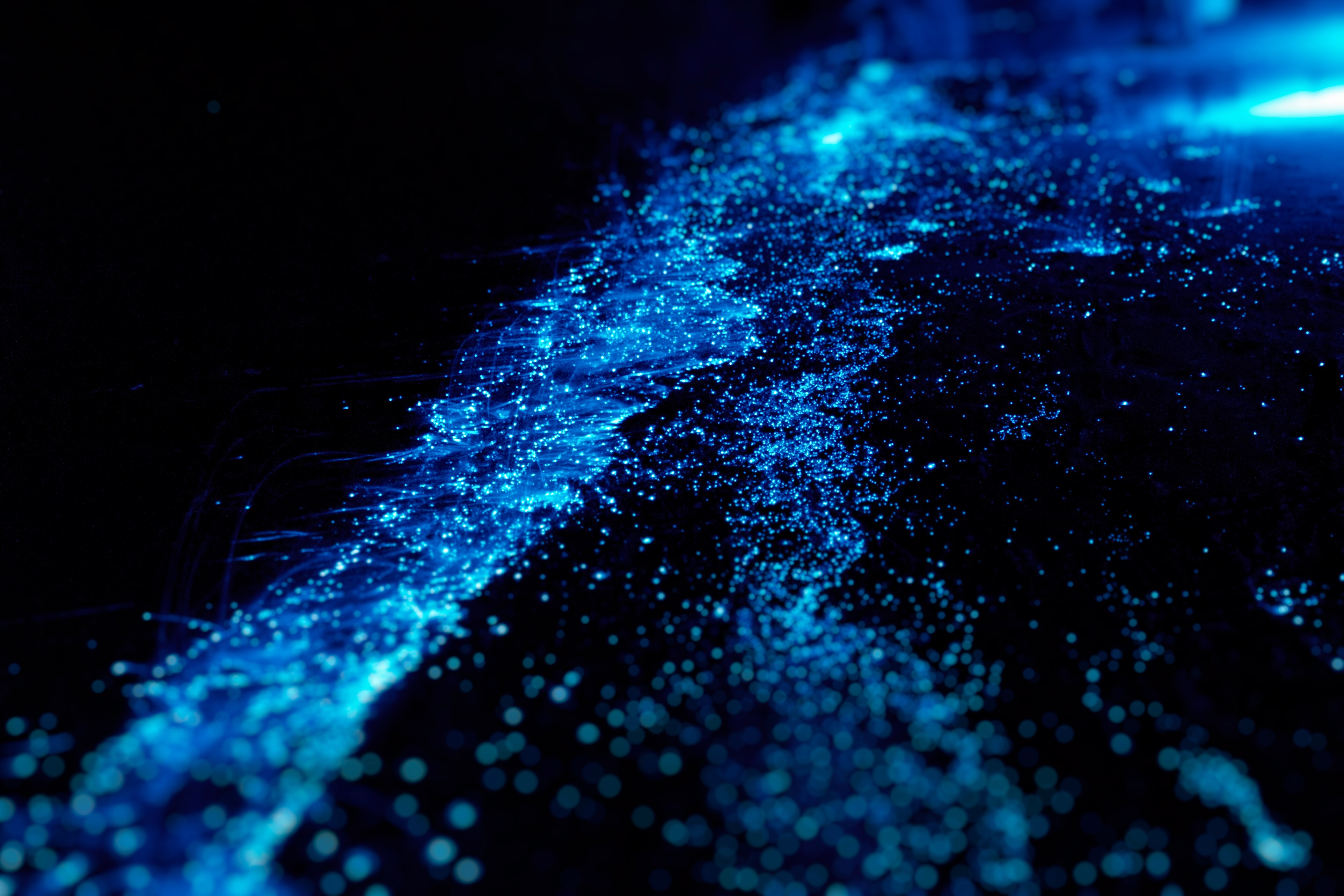
My experience of snorkelling with plankton
I snorkelled with bioluminescence in Cambodia and I can honestly say that it’s one of the most incredible experiences that I’ve had while travelling.
When we were in the dark water, it was like entering a different universe and the bioluminescence reacts to touch. The more that you move in the water, the more that the plankton glows and it appears neon yellow underwater.
The plankton looks like the yellow polystyrene balls and you can pretend to be a wizard by ‘throwing’ the sparks of light. When you watch people in the water, you can see the glowing bubbles surrounding them, but it’s not an intense as underwater.
On our way back on the boat, we could see blue blooms where the hull hit the sea which was also beautiful. When we flicked the water, it made blue sparkles and it was perfection. Whether above or below water, bioluminescence looks different but both are an incredible experience.
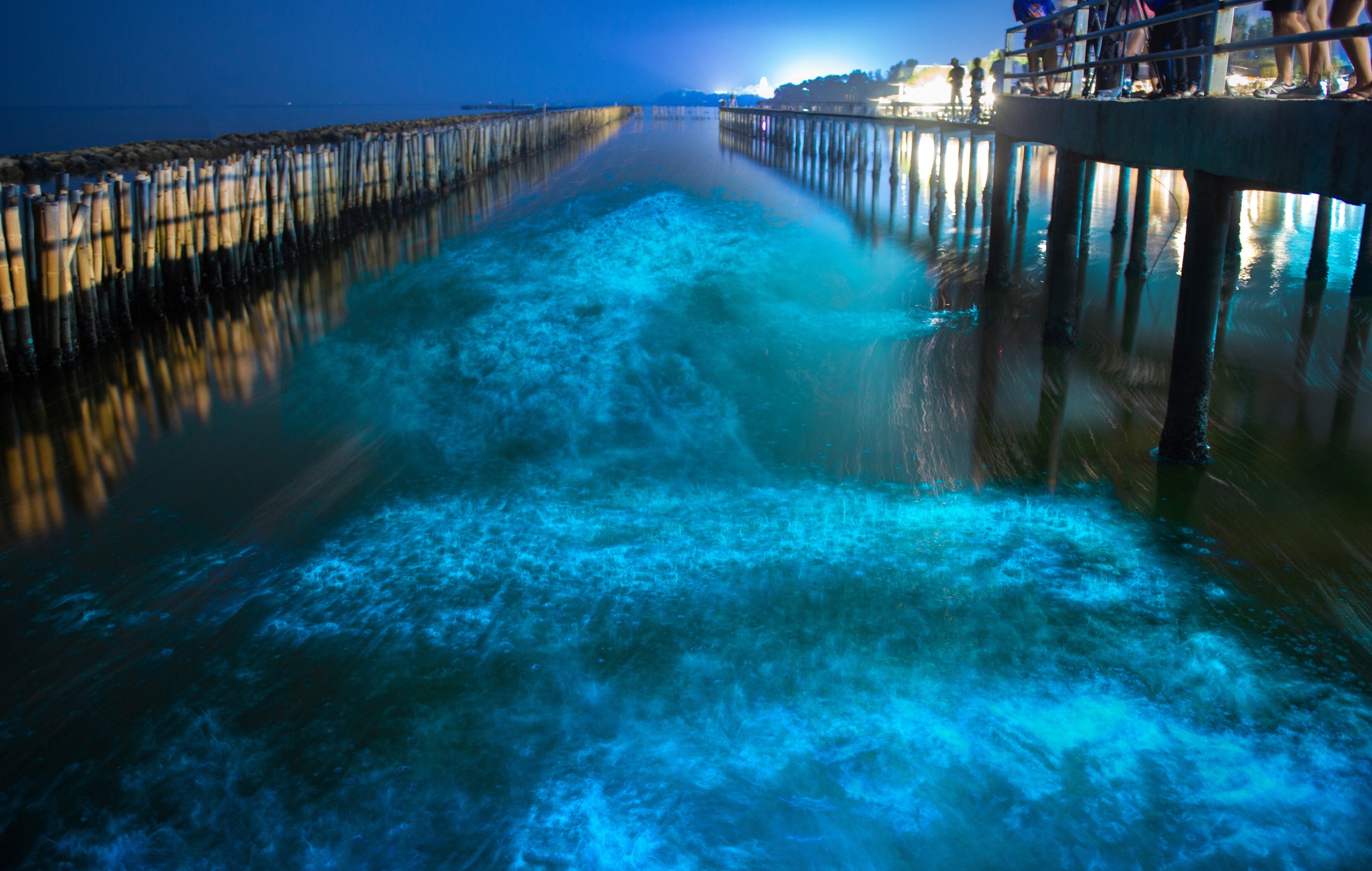
How do you find bioluminescence?
The conditions have to be right to see this plankton, and nights with a full moon as a no-no as it’s too bright. It needs to be overcast. You can still see the glow when it’s raining which can sometimes be more impressive, but don’t go out in storms.
They usually gather in warm-water bays or lagoons when they can’t leave as easily through the opening. Always do your research first, and be careful on dark beaches if you’re looking for it.
How do you photograph it?
Bioluminescence is incredibly hard to capture on camera. You need a decent camera that works well in low-light conditions as well as a tripod.
You need to set a long exposure to capture all the light, keep your camera still and use your manual focus. It takes a lot of trial and error to get a good picture so you need to be a very patient. Check out Digital Camera World for more tips from professionals.

Places in the world where you can see bioluminescent plankton:
- India
- Southern Thailand
- Taiwan
- Puerto Rico
- Florida
- Japan
- California
- Cambodia
- Australia
- Vietnam
- Jamaica
- Mexico
So if you’re planning on visiting any of these places, find out whether you’ll be passing a bioluminescent bay along the way!
If you’re interested in bioluminescence and you’re visiting Southeast Asia then I definitely recommend doing it on the Cambodian islands.
We stayed in Sara Resort on Koh Rong Samloem which was great and we booked our trip from there. Check Tripadvisor for deals and reviews in bioluminescent areas!
Have you ever seen bioluminescent plankton in action? If so, whereabouts in the world did you see it? Let me know in the comments below!
Pin this for later:
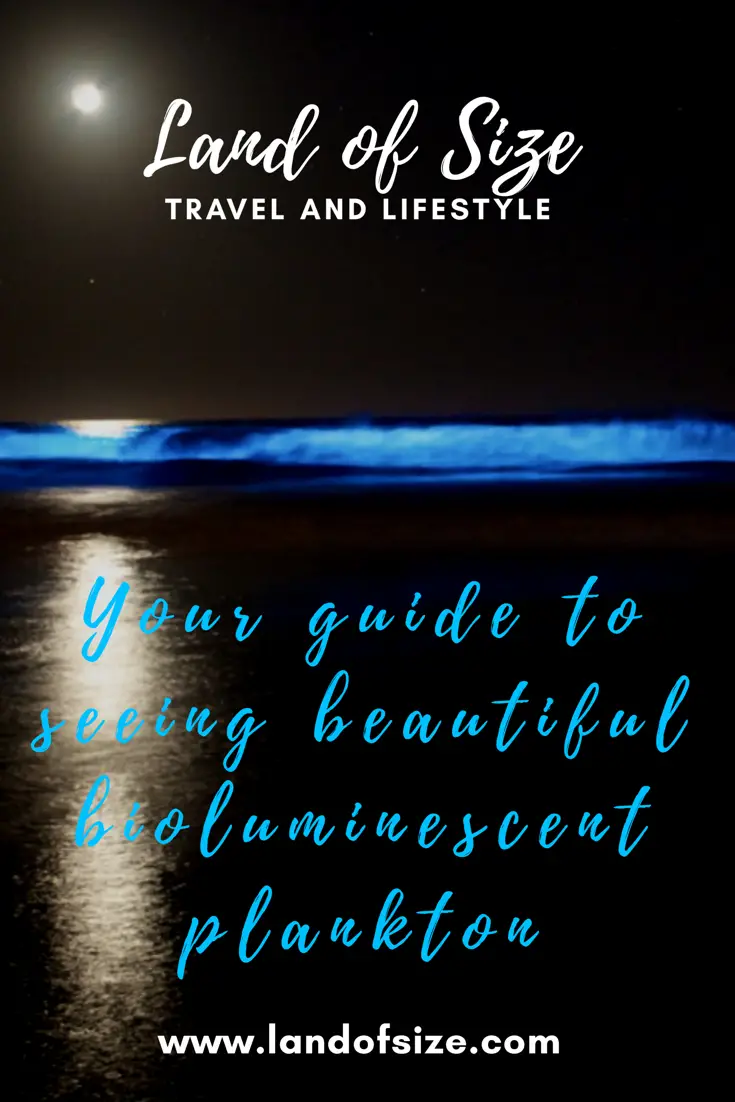
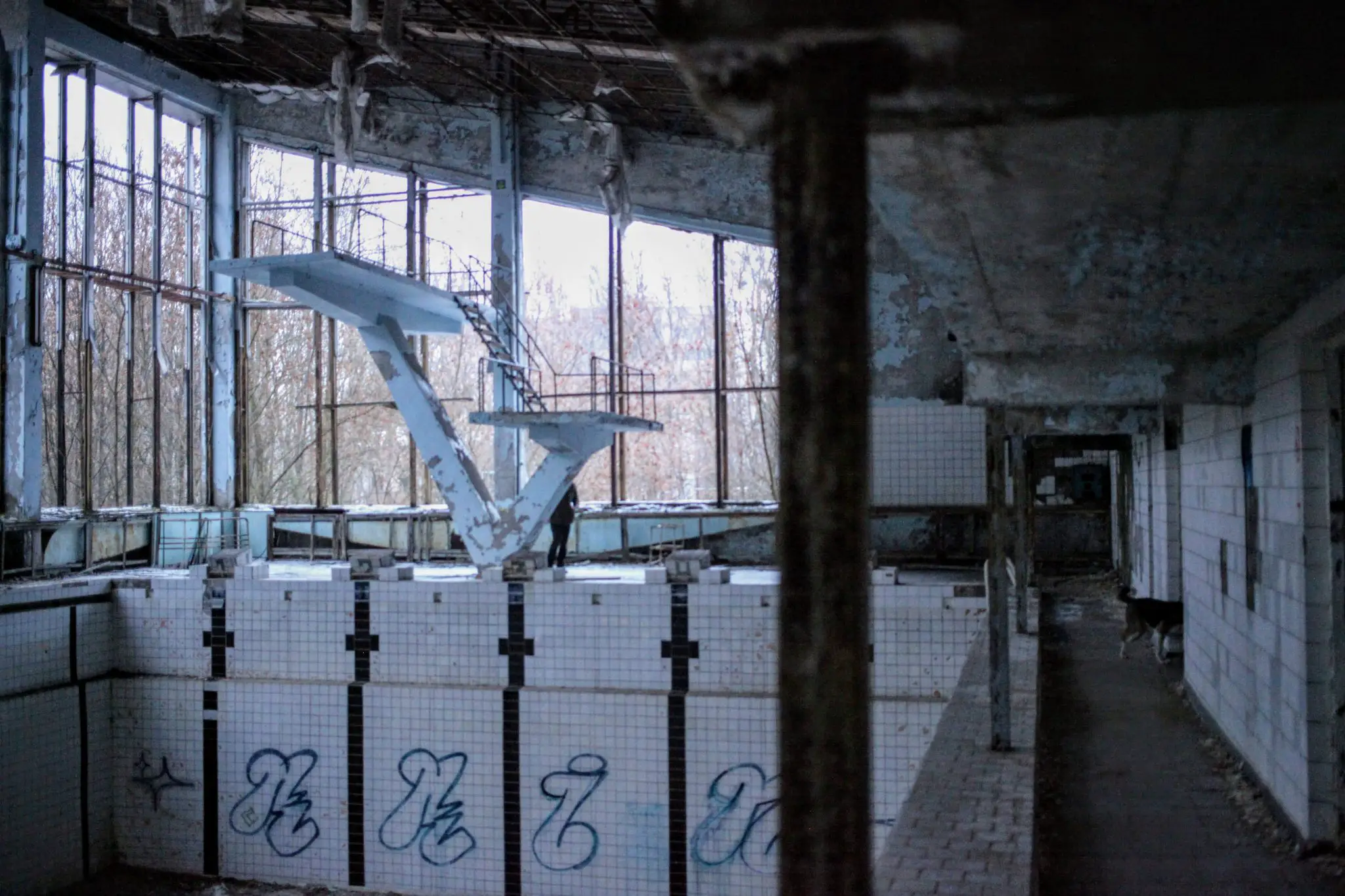
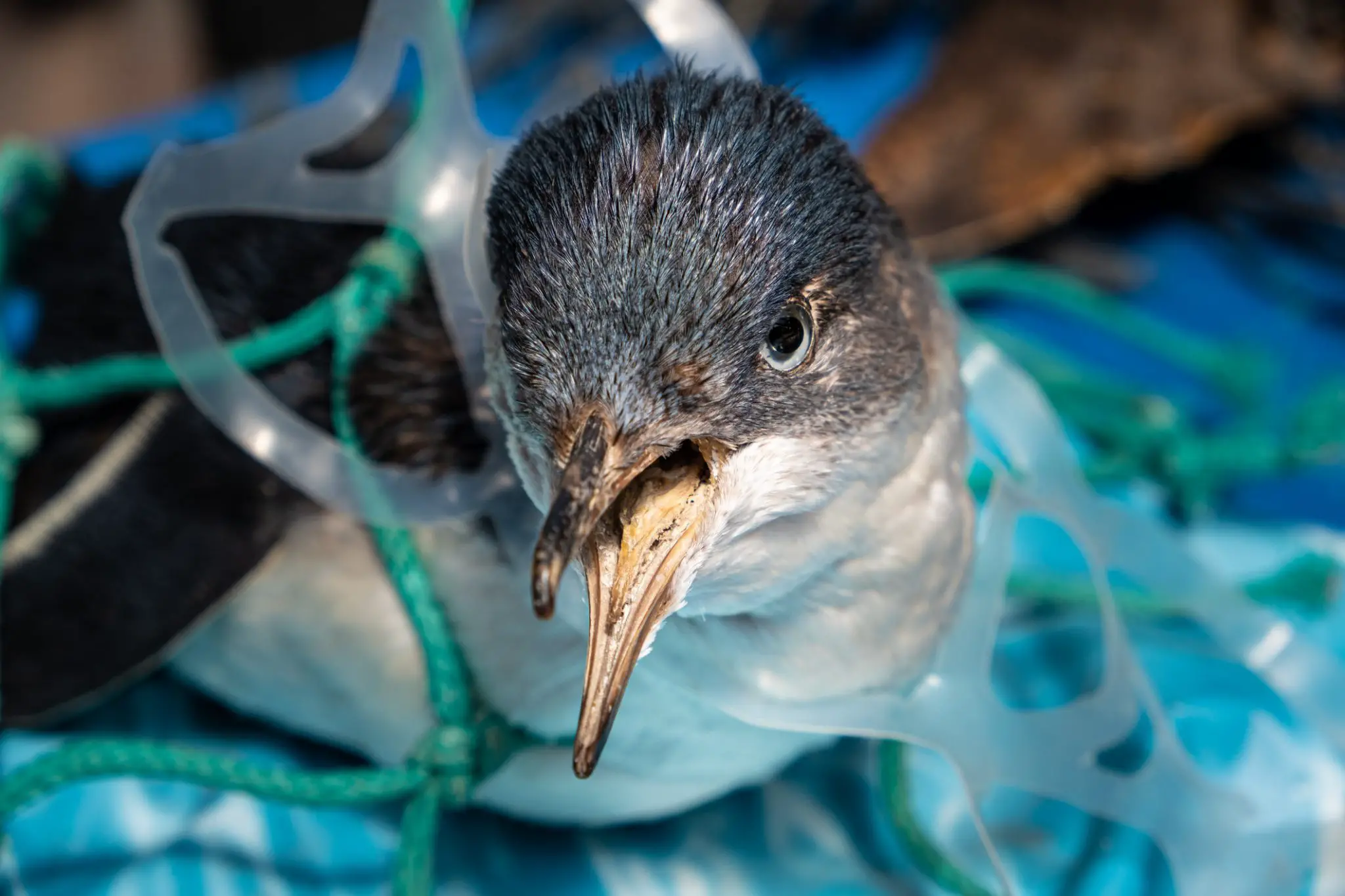
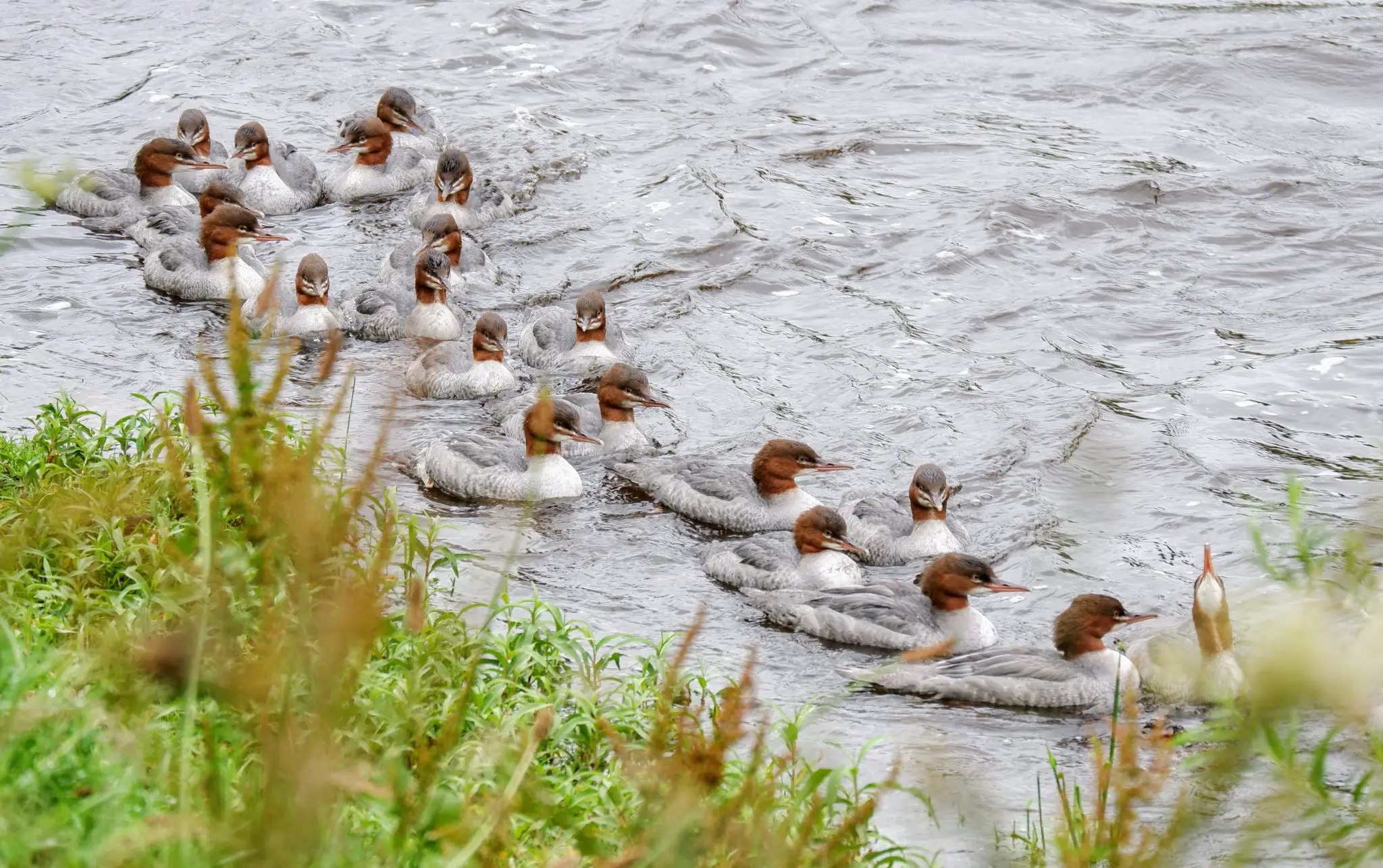

Leave a Reply